Influencer marketing campaigns are a flexible tool that can be shaped to achieve a number of different marketing goals. They are cost-effective and extremely personalizable both for aims and delivery methods.
But many companies are still reluctant to use influencers, this is especially true with small to medium-sized brands which would have some of the biggest advantages to use influencers.
With this article, we want to shed some light on 5 aspects of influencer marketing and show how it is a viable option for many brands out there.
1. Define Your Goals Clearly
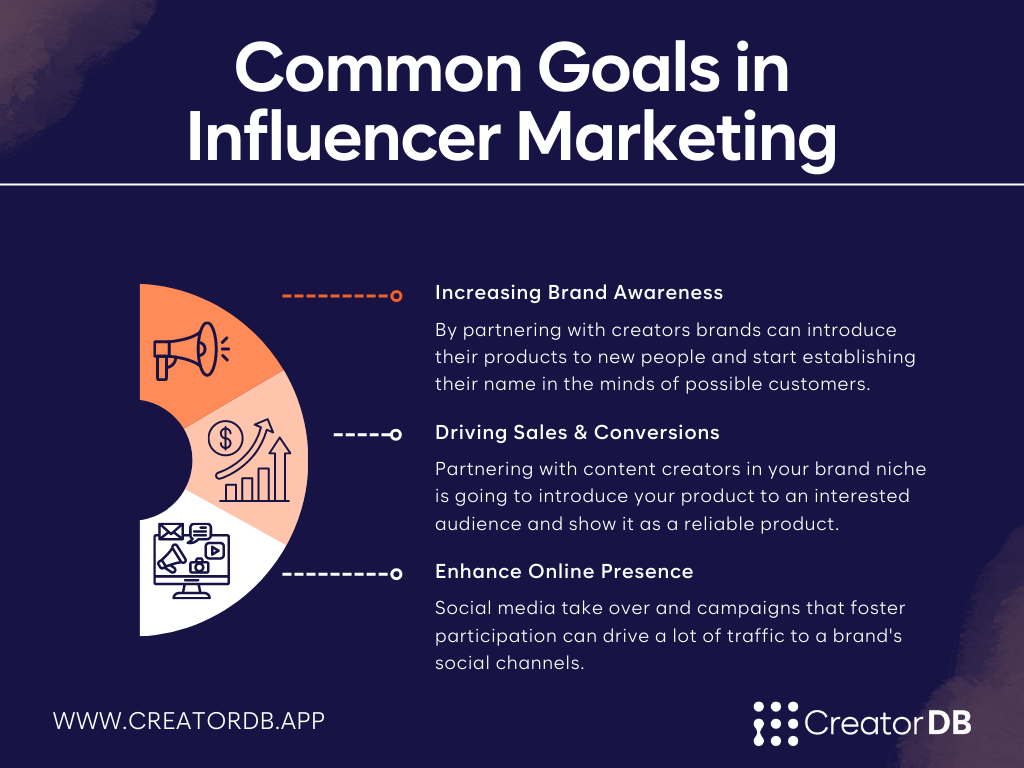
Every marketing campaign should have clear and measurable goals defined before it starts running.
As long as they are based on measurable goals broken down into measurable steps to achieve them, influencer marketing can be used to pursue any goal.
The most common goals for influencer marketing campaigns are:
Understanding how influencers can help reach these goals will make it easy to create clear measurable goals for your brand and ace your next campaign.
1.1 Increasing Brand Awareness
Brand awareness is often a nebulous concept that gets used to vaguely explain a lot of likes/views on social media but not as many sales.
But that does not have to be the case. Brand awareness is a real thing and is extremely important for new and emerging brands.
By partnering with creators brands can introduce their products to new people and start establishing their name in the minds of possible customers.
Most customers require more than one touchpoint to make a purchase and having your product introduced by someone that the audience finds trusted and reliable is a great way to start this process.
Brand awareness is often calculated from the number of impressions a post receives. But can be also considered the increase of followers on a brand-owned social media or the brand mentions.
Campaigns that aim to increase brand awareness should maximize reach over any other objective and possibly do so by creating expectations and curiosity around the product.
1.2 Driving Sales and Conversions
Sales are the most direct measure of a campaign’s success. They bring to the brand tangible resources and show how the audience they targeted is directly interested in the product.
While easy-to-track sales can be more tricky to directly stimulate.
But influencer marketing can provide unconventional ways to boost your sales.
Many influencers are authorities in their niche, they grow their following by presenting their audience with valuable information and content related to their interests.
Partnering with well-known content creators in your brand’s niche will introduce your product to an interested audience and show it as a reliable product.
1.3 Enhance online presence
One’s online presence and reach are most commonly evaluated by the number of followers on social media and how the followers are engaged with the posts published.
Influencers can be an amazing tool to improve reach and engagement. Social media take over and campaigns that foster participation can drive a lot of traffic to a brand’s social channels.
2. Choose the Right Influencers
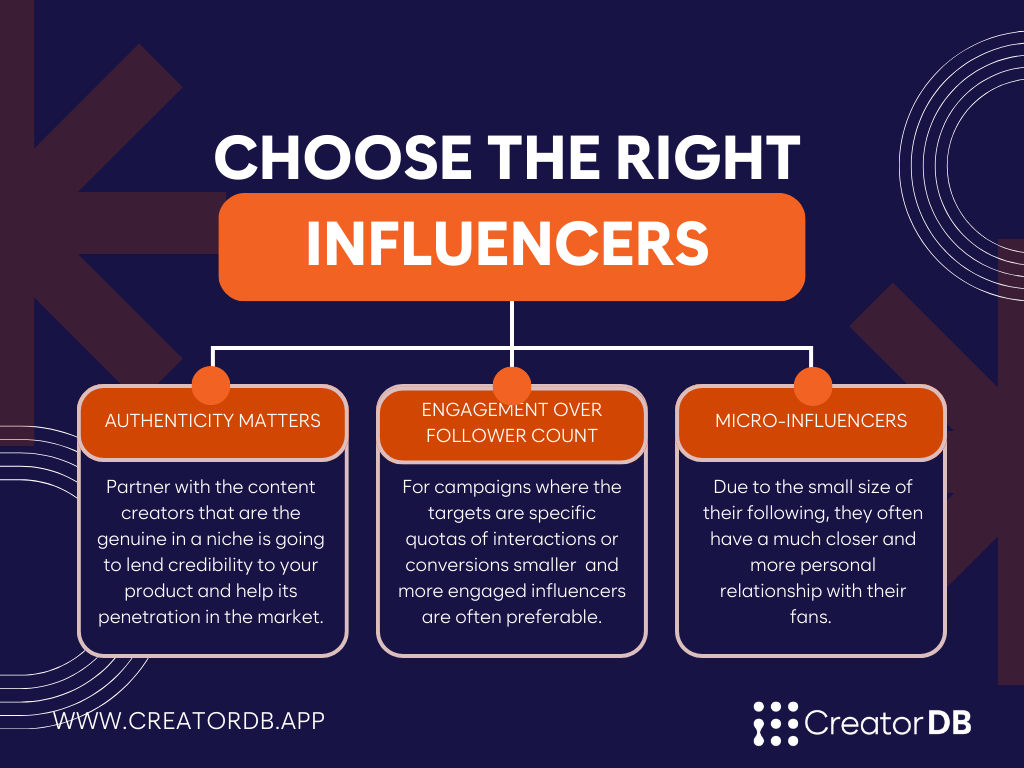
Influencers are not all the same, each one of them is slightly different and caters to a unique audience.
Therefore, when creating an influencer marketing campaign is important to select carefully which influencers to partner with.
In the early days, follower count was all that mattered; nowadays, it has been replaced by taking into consideration metrics that more closely reflect the campaign results.
Here are three tips for picking the right influencer:
2.1 Authenticity Matters
Being authentic is a highly debate characteristic in the days of Photoshop and beautifying filters. But more than how an image can be authentic or not you want to focus on the message.
Many influencers gained notoriety by showing their true colors and it created a deep connection with their audience.
Being able to identify and partner with those content creators who are the genuine faces in your niche is going to lend credibility to your product and help its penetration in the market.
2.2 Engagement Over Follower Count
How useful is a huge number of followers if they don’t engage with the content published?
Not much.
That’s why you should not only look at the follower count but also take into consideration metrics like engagement rate, sentiment, and historical trends.
A large following still has utility, especially if the campaign is aiming at increasing brand awareness or reaching a completely new audience.
When a campaign aim to improve sales, an engaged audience is more likely to bring positive results.
2.3 Micro-influencers
Micro-influencers incarnate the two previously mentioned points:
- they are authentic
- they put engagement over follower count.
Micro-influencers cater to niches of content that are often very segmented and allow them to target highly specific audiences.
Due to the small size of their following, they often have a much closer and more personal relationship with their fans. Due to this connection, followers are likely to trust them more and see their opinions and suggestions like one of their close friends.
And they are cheaper than larger influencers.
3. Craft Engaging Content
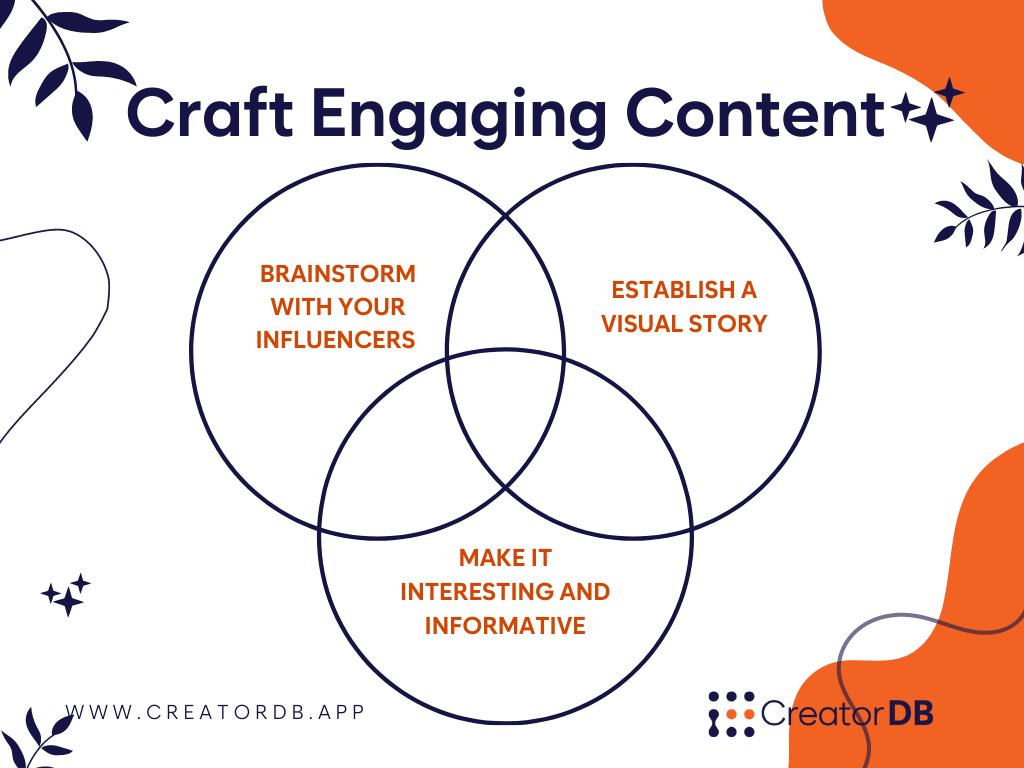
Ads on many other mediums are often crafted to tend to a generalist audience, trying to catch the attention of as many people as possible. But with influencers, there is already a self-selection of the audience.
A successful campaign needs to combine the understanding the influencers have of their audience with the brand personality in an almost seamless manner.
3.1 Brainstorm with your influencers
First and foremost, influencers understand their audiences well.
Therefore, it’s recommended to include them in the process of crafting the campaign messaging and modes of delivery.
Brands should limit their intervention to establishing overarching themes, while delivery and artistic ideas should be reserved for creators.
3.2 Visual Storytelling
Social media are largely visual first platforms, when creating an influencer campaign be aware of these details.
A campaign that involves multiple influencers across different platforms should still be easily recognized as such just by taking a look at it.
Creating a framework to operate in is a great way for brands to have influencers on the same wavelength.
Shared details like ad structure, ways to introduce the product, color scheme, etc. help the customers to easily remember the products and create a stronger connection with them.
3.3 Interesting and Informative Content
Influencers are not spokespersons, they don’t exist only to promote brands.
Their appeal is largely due to them bringing interesting and informative content to their audience.
Likewise, a marketing campaign should be aimed at bringing value to them.
The customer should have the feeling to have gotten something out of the ad even before purchasing the good.
4. Establish Clear Guidelines
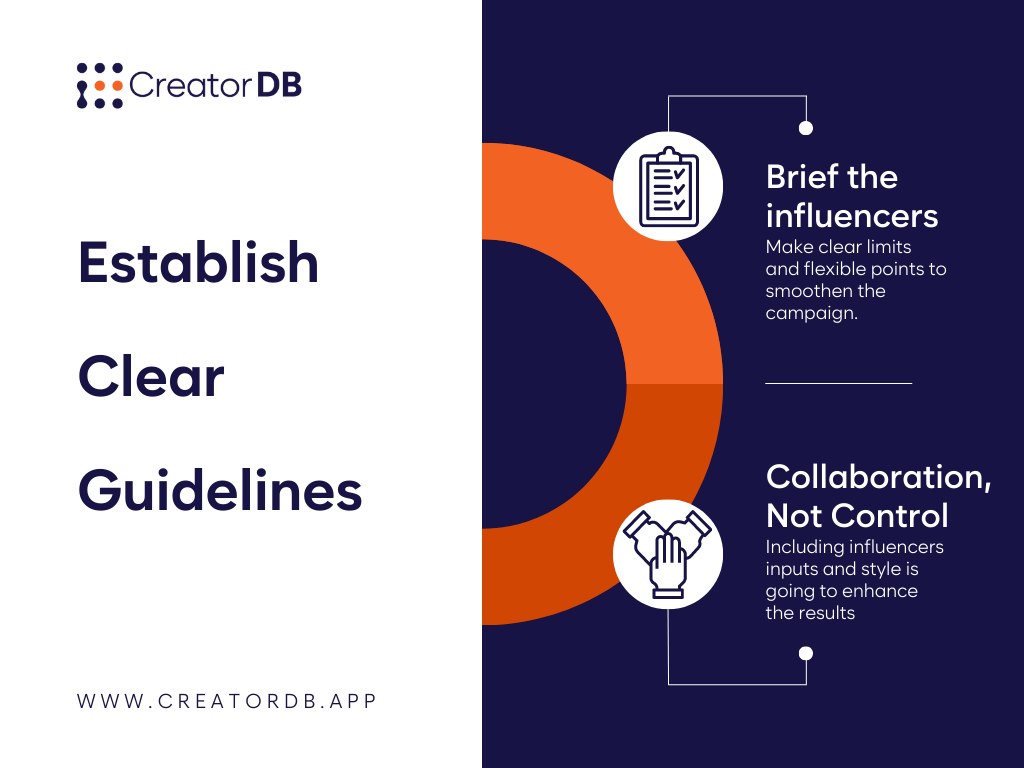
Creators can be difficult to work with especially when it’s the first time.
Miscommunications are often the spark to attrition.
While in most cases they are not deal breakers and are made in good faith these issues are still an annoyance to deal with. Luckily they can be avoided just by implementing two simple mechanisms:
4.1 Brief the influencers
Before the creators start to work on their deliverables make sure to explain to them the campaign, what is expected, and the final goal.
Make clear which parts of the campaign have to be strictly implemented and where they can use a major degree of freedom.
Having everyone aware of limits and flexible points is going to help the campaign run smoothly without requiring too much back and forth between the brand and creators.
4.2 Collaboration, Not Control
Ultimately brands want to partner with influencers not only for their platform but also for their style, and the ability to convey messages.
Therefore, partnerships should be imprinted toward collaboration: including their inputs and style in the campaign is going to enhance the results all while giving it an exclusive touch.
5. Measure and Optimize
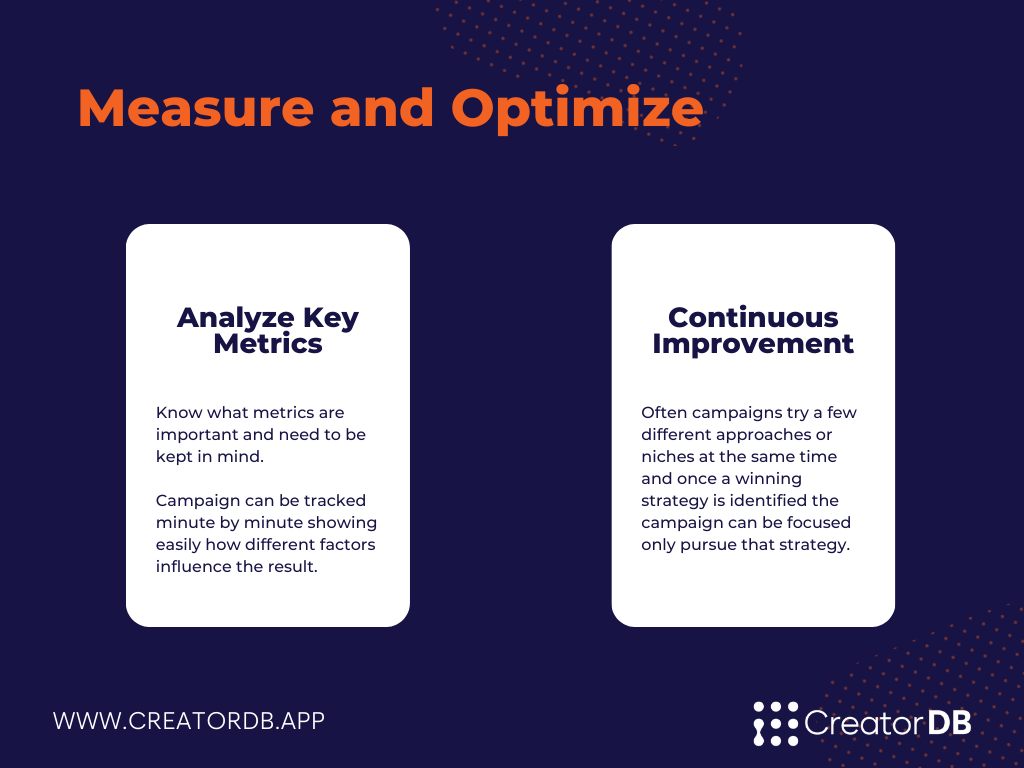
Many think that influencer marketing lacks ways to measure its impact but that is just because they never looked into it well enough.
As with every other form of marketing, influencer marketing goals and results can be tracked, and since all actions on social media are recorded it is even simpler than with other mediums.
With this level of information, it is also simple to understand on the fly how things are going and focus on what works.
5.1 Analyzing Key Metrics
If the goals have been established correctly it is easy to know what metrics are important and need to be kept in mind.
This way a campaign can be tracked minute by minute showing easily how different factors influence the result.
5.2 Continuous Improvement
By keeping track of the results in real-time a campaign can be stirred in a more favorable direction.
Campaigns can commit to different approaches at the same time initially but focus only on the winning ones when the data comes in.

Conclusion
Influencer marketing campaigns have at times a bad name because of a lack of understanding of what influencer marketing can really bring to the table.
With our 5 tips, we wanted to prove that influencer marketing is a great tool for brands once is understood and campaigns are crafted keeping in mind the strengths and weaknesses of it.



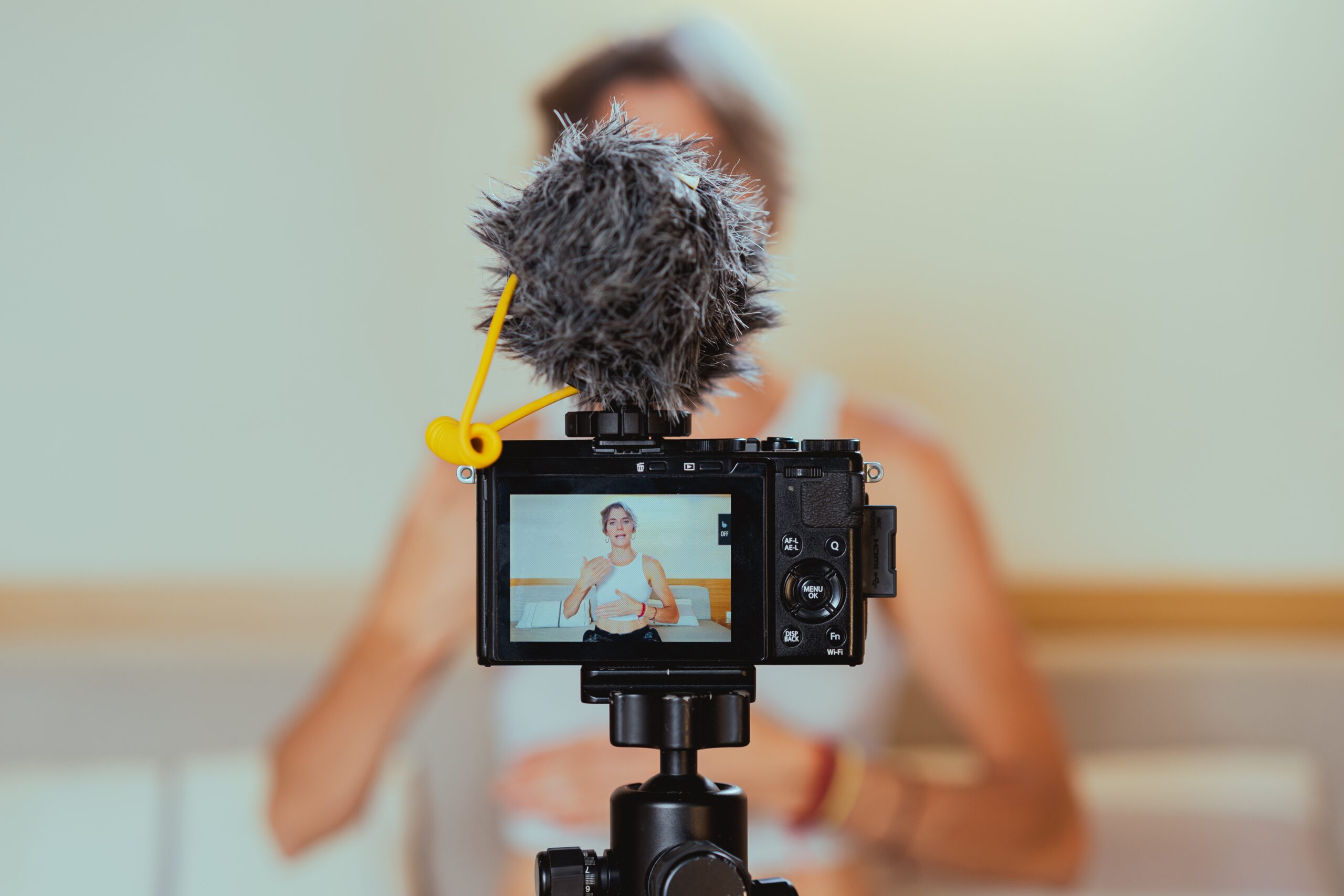

![How To Improve Valentine’s Day Marketing Using Influencers [with Examples]](https://www.creatordb.app/wp-content/uploads/pexels-picjumbocom-196664-scaled.jpg)


